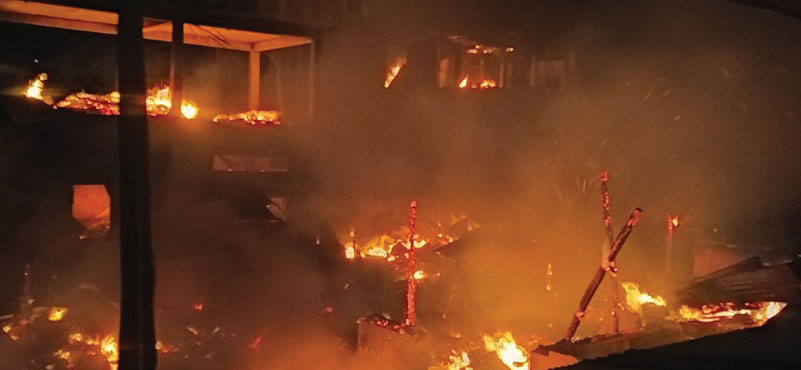It is not always necessary to ask the question: who is right, who is wrong. Important that we find solutions, that put speculation and suspicion to rest; governance demands peace must be restored, by bringing all affected parties to a discussion table – the author here details possible causes of the present unrest, traces the diversity of the region, and its complexities.
Manipur has been on the boil with violence, killings and rape for the last nearly 4 months that has degenerated into an ongoing conflict zone of sectarian violence with religious undertones. Communal violence in India has erupted on and off over many decades across various dispensations at the state/centre and across regions, triggered seemingly by a small incident or speech that gets inflamed by fanatics and vigilantes to violence to unleash their rage and hatred for the other. The ground would have been laid by recent or earlier history of pernicious politics/politicians, lax administration and trigger-happy police. In some malicious cases the communal violence is pre-planned and stage managed with an agenda and the administration is either complicit or grossly negligent.
India is a rich tapestry of its diversity
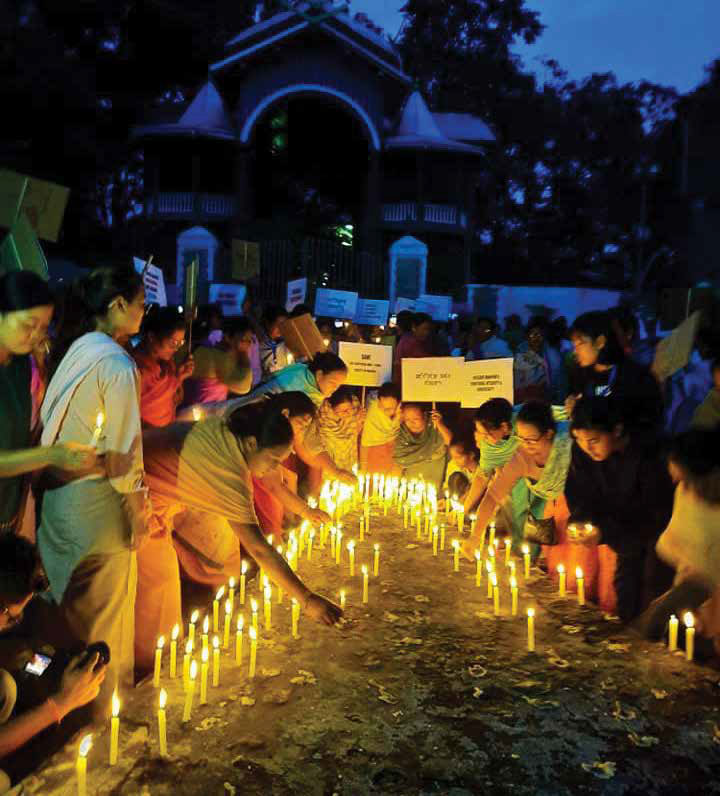 India is a highly diverse country – probably the most heterogeneous in the world – of multiple castes, customs, communities, religions, ethnicities, linguistics and more. As the largest populated country of 140 crore, it is a complex federation of regional and local identities that are so varied, assorted and multifarious as to make it a conglomeration of cultures. This multi-dimensional and layered structure is held together by delicate bonds of social, ethnic, linguistic and political accommodation and when these tenuous links are over-stressed or fray over time the result is the eruption of pent-up fury. Many regions and communities in outlying areas of our variegated and ancient land are very distinct from the Hindi heartland that mostly does not understand the essence and nuances of the disparate people.
India is a highly diverse country – probably the most heterogeneous in the world – of multiple castes, customs, communities, religions, ethnicities, linguistics and more. As the largest populated country of 140 crore, it is a complex federation of regional and local identities that are so varied, assorted and multifarious as to make it a conglomeration of cultures. This multi-dimensional and layered structure is held together by delicate bonds of social, ethnic, linguistic and political accommodation and when these tenuous links are over-stressed or fray over time the result is the eruption of pent-up fury. Many regions and communities in outlying areas of our variegated and ancient land are very distinct from the Hindi heartland that mostly does not understand the essence and nuances of the disparate people.
Has Manipur become a victim of cultural and political imposition from outside that has snapped the local equilibrium between the communities built up over long years? The ethnic minorities living in the hills have felt a perceived partiality displayed by the state government to promote the majority ethnic majority living in the valley. The 4 sub-nationalisms at play in the state are Meitei, Kuki, Naga and Bamar with each having its own identity, history, position and armed militias. The primary political identity is in terms of which group you belong to and the present clash is between the majority Meiteis living in the valley and the minority Kukis in the hills. The former is in the majority in the state legislature as well as in the civil administration and police that gives it overarching and dominant power and authority. The contours of the asymmetry and skewed equation has an added dimension in the form of religion as the Meiteis are mainly Hindu and the Kukis are mostly Christian which gives the conflict another twist and a different edge.
The Division here is ethnic and linguistic, not religious or communal
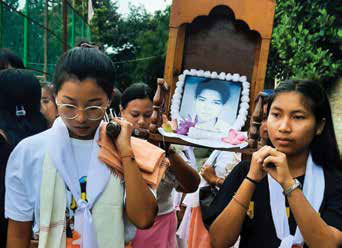 The normative axis of division and conflict in the Northeast has been ethnic and linguistic rather than religious or communal. Immigrants moved from Bengal into Assam in the early 20th century when the British partitioned undivided Bengal in 1905 to curb nationalism in the large state and to exploit the religious sentiments. The division of Bengal was so unpopular that the British within six years accepted it as unsuccessful and restored the status quo of one Bengal in 1911. The devastating Bengal famine of 1943-44 occasioned another wave of immigrants in to Assam (and elsewhere) of both Hindus and Muslims to earn a livelihood and created social and economic pressures that persisted in to the ensuing years. The Assam students agitation of the 1980s was against the ongoing illegal immigration that was threatening the demographic structure of the state and the limited land available on both sides of the Brahmaputra. It acquired a religious undertone when some vested interests wanted to exploit this aspect of those crossing over from Bangladesh to suit their political and communal interests. The Northeast is a complex patchwork of identities, cultures, loyalties, land, history and religion of its people and tribes that necessitates exercising equity, maturity, sagacity and even-handedness in governance and administration to maintain the social calm and balance.
The normative axis of division and conflict in the Northeast has been ethnic and linguistic rather than religious or communal. Immigrants moved from Bengal into Assam in the early 20th century when the British partitioned undivided Bengal in 1905 to curb nationalism in the large state and to exploit the religious sentiments. The division of Bengal was so unpopular that the British within six years accepted it as unsuccessful and restored the status quo of one Bengal in 1911. The devastating Bengal famine of 1943-44 occasioned another wave of immigrants in to Assam (and elsewhere) of both Hindus and Muslims to earn a livelihood and created social and economic pressures that persisted in to the ensuing years. The Assam students agitation of the 1980s was against the ongoing illegal immigration that was threatening the demographic structure of the state and the limited land available on both sides of the Brahmaputra. It acquired a religious undertone when some vested interests wanted to exploit this aspect of those crossing over from Bangladesh to suit their political and communal interests. The Northeast is a complex patchwork of identities, cultures, loyalties, land, history and religion of its people and tribes that necessitates exercising equity, maturity, sagacity and even-handedness in governance and administration to maintain the social calm and balance.
The Genisis: How the Events Rolled?
In early March this year, the Manipur Government unilaterally withdrew from a tri-lateral pact negotiated in 2008 with the Kukis and Zomis called SoO (Suspension of Operations), claiming that the hill tribes were not observing it properly. Then on 27 March, the High Court asked the government on a reservations plea to consider giving the majority Meiteis the status of a Scheduled Tribe (ST) with all its benefits. This was made public only weeks later, on 19 April, which led to widespread protests by Kuki, Zomi and Naga tribes. It further aroused their fears of losing their control and influence in the hills against the backdrop of their demand for autonomy and separate administrations for their areas which has become the core issue. When ethnic clashes broke out on 3rd May, the state police did not intervene urgently and sufficiently enough to curb the violence on both sides and remains heavily compromised in the eyes of non-Meiteis as corrupt and partial to the majority community. The Meiteis constitute 53%, Nagas 24% and Kukis/Chins 16% of the total population making the majority group very dominant. In this scenario granting ST status and consequent benefits to the Meiteis was seen as incongruent and provocative by the Kukis and others. Thus, the withdrawal of the SoO and according ST status to Meiteis set the stage for the meltdown that was to follow.
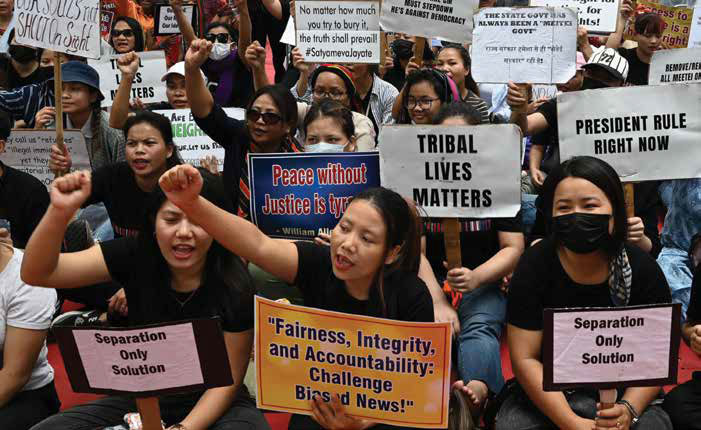
In the first phase of violence (3-6 May) 59 people are said to have died with the State Police unable to intervene effectively and in the second phase (25 – 31 May) another 28 died. The Police armouries were looted by mobs and the state police could not or would not stop the mobs by stopping/shooting them and 90% of the hundreds of tons of the spoils is with the Meiteis. The Assam Rifles (AR) as the premier para-military force was asked to restore order but the Meiteis and State Police dislike the AR which is under the operational control of the Army and led by 80% of its officers. In fact the Meiteis are demanding withdrawal of this force which comes under the administrative control of the Home Ministry and the police and AR have had had public spats such as the most recent one on 5 August when Assam Rifles stopped the state police from crossing over to a Kuki area. The state police were very aggressive and bellicose against the AR for stopping them as the videos posted on social media showed; a police SI even had the temerity to file an FIR against the AR for this roadside squabble when such an action would require a clearance from the civilian leadership. Despite the top army commanders meeting the CM about this FIR filed against the 9th battalion of AR it has not been withdrawn and is truly an extraordinary development, maybe never seen before.
The Implications and the Stand-off !
The Manipur police is neither neutral nor effective in controlling the law and order in the surcharged and sensitive conditions prevailing. When 200 men on motorcycles suddenly arrived in Imphal from outside the state, armed and rearing to fight and were goading the Meiteis on – some engaged in attacks and violence – the state police made no effort to stop this outside group. The operation seemed to be well planned, funded and executed and it is not clear who organized it which is anybody’s guess! The ethnic conflict has divided the police and other state forces with many defecting to their communities along with their arms. The infamous video of 2 women being paraded naked on 4 May and then sexually assaulted surfaced after two and a half months on 19 July and sparked outrage across the country and made news internationally. The women have filed petitions in the Supreme Court against the state and centre and the case has been taken over by the CBI. Why it took so long for this appalling incident to manifest publicly and how many more such horrors have taken place is unclear but is symptomatic of the gravity of the situation. Sushant Singh, a senior fellow at the Centre for Policy Research and an army veteran calls the situation ‘close to a civil war’ in the shadow of thousands of cases of arson and looting committed despite the presence of central and state forces.
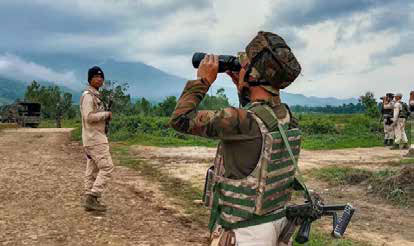 The Kukis feel deeply aggrieved that the Meiteis are being shielded and favoured by the Chief Minister N. Biren Singh (who is a Meitei) and that his administration is unable to provide safety and security to the hill people. They have been demanding his removal and all 10 Kuki legislators (including the 7 BJP party MLAs from the hill tribes) have signed a memorandum to the Home Minister asking for the CM’s removal and for an autonomous administration in the hills. Despite egregious failures to curb the ongoing violence in the state and inability to instill confidence among the minority tribes the Chief Minister remains in office and the Centre is mysteriously persisting with him and refusing to bring in President’s rule which would allow tempers to cool down with an impartial executive. Invoking of President’s rule has been the standard practice in the past whenever widespread riots, violence and disturbances have broken out anywhere in India on an ongoing basis and the State government appears weak, unable or negligent in controlling the situation.
The Kukis feel deeply aggrieved that the Meiteis are being shielded and favoured by the Chief Minister N. Biren Singh (who is a Meitei) and that his administration is unable to provide safety and security to the hill people. They have been demanding his removal and all 10 Kuki legislators (including the 7 BJP party MLAs from the hill tribes) have signed a memorandum to the Home Minister asking for the CM’s removal and for an autonomous administration in the hills. Despite egregious failures to curb the ongoing violence in the state and inability to instill confidence among the minority tribes the Chief Minister remains in office and the Centre is mysteriously persisting with him and refusing to bring in President’s rule which would allow tempers to cool down with an impartial executive. Invoking of President’s rule has been the standard practice in the past whenever widespread riots, violence and disturbances have broken out anywhere in India on an ongoing basis and the State government appears weak, unable or negligent in controlling the situation.
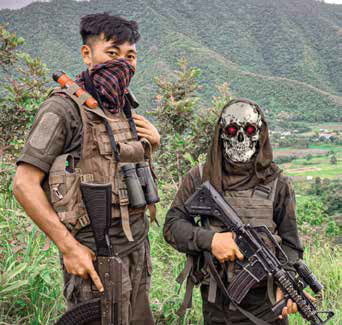 Walter Fernandes, Director Northeast Social Research Centre (NESRC) a respected figure in the region says that the religious element in the conflict has made the divisions harder and deeper with hundreds of churches having been burnt by the Meiteis. The symbols of democratic backsliding i.e. dilution of institutional autonomy, political centralization and authoritarian attitudes of the ruling elites are plainly evident in Manipur and have contributed to the conflict and its non-resolution. When distinction between theology as a spiritual moral force and as an expression of identity disappears religions become competing ideologies and the fallout can be devastating. Fascination for publicly displayed religiosity and its emerging dogmatic nature has serious implications and poses a challenge to democracy.
Walter Fernandes, Director Northeast Social Research Centre (NESRC) a respected figure in the region says that the religious element in the conflict has made the divisions harder and deeper with hundreds of churches having been burnt by the Meiteis. The symbols of democratic backsliding i.e. dilution of institutional autonomy, political centralization and authoritarian attitudes of the ruling elites are plainly evident in Manipur and have contributed to the conflict and its non-resolution. When distinction between theology as a spiritual moral force and as an expression of identity disappears religions become competing ideologies and the fallout can be devastating. Fascination for publicly displayed religiosity and its emerging dogmatic nature has serious implications and poses a challenge to democracy.
Assam Rifles has a few days back issued a legal notice to a Manipur MP who is National Secretary of the Republican Party of India (RPI, which is mostly Maharashtra centric) for causing considerable harm to the reputation and standing of the oldest para-military force of India. His denigrating assertions in Delhi that Assam Rifles was abetting the Kukis in acts of arson and the defamatory suit filed by AR against the MP are actions unparalleled and never seen before in India. He later declined to apologise stating that he spoke as a Meitei and not as an MP – an absurd justification. Previously on 10 July, AR was forced to file a criminal case against COCOMI a civil society organization in Manipur for giving a call to the people ‘not to surrender their weapons‘.
Caution and Restraint: Earliest Resolution is Critical
The situation in Manipur is assuming a severe and grave substance which can become self-perpetuating with a life of its own. The danger of diffusing beyond the state is ever present and calls for early resolution of the conflict. Protraction and postponement are common tools in politics but can prove very dangerous for peace and accord in this part of the northeast. Only prudent, astute and wise leadership in the state can impart a healing and calming salve to cool and soothe the inflamed passions and provide trust and confidence to all, in particular the minorities.
ABOUT THE AUTHOR
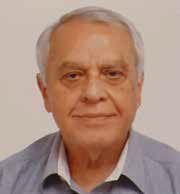 Deepak Dadlani was commissioned into Indian Air Force, served for almost 10 years and left voluntarily. Veteran in the Aircargo and Logistics industry, he is an independent commentator on national affairs
Deepak Dadlani was commissioned into Indian Air Force, served for almost 10 years and left voluntarily. Veteran in the Aircargo and Logistics industry, he is an independent commentator on national affairs

